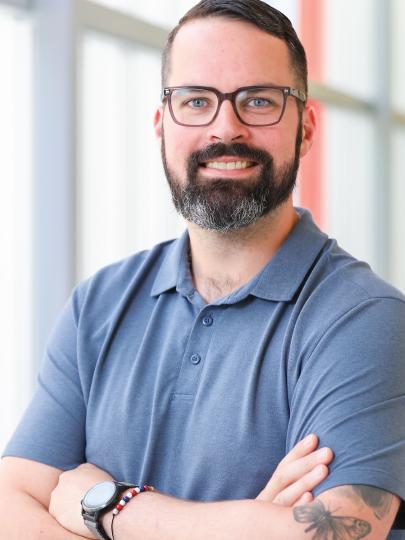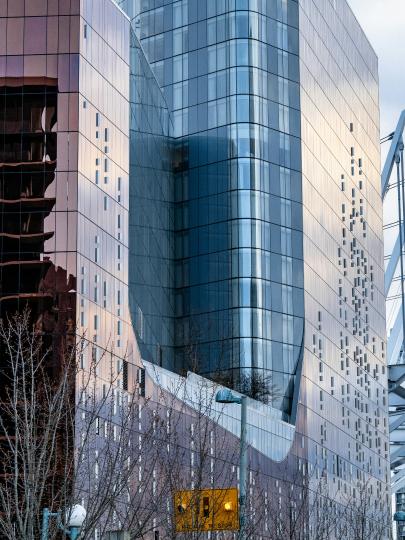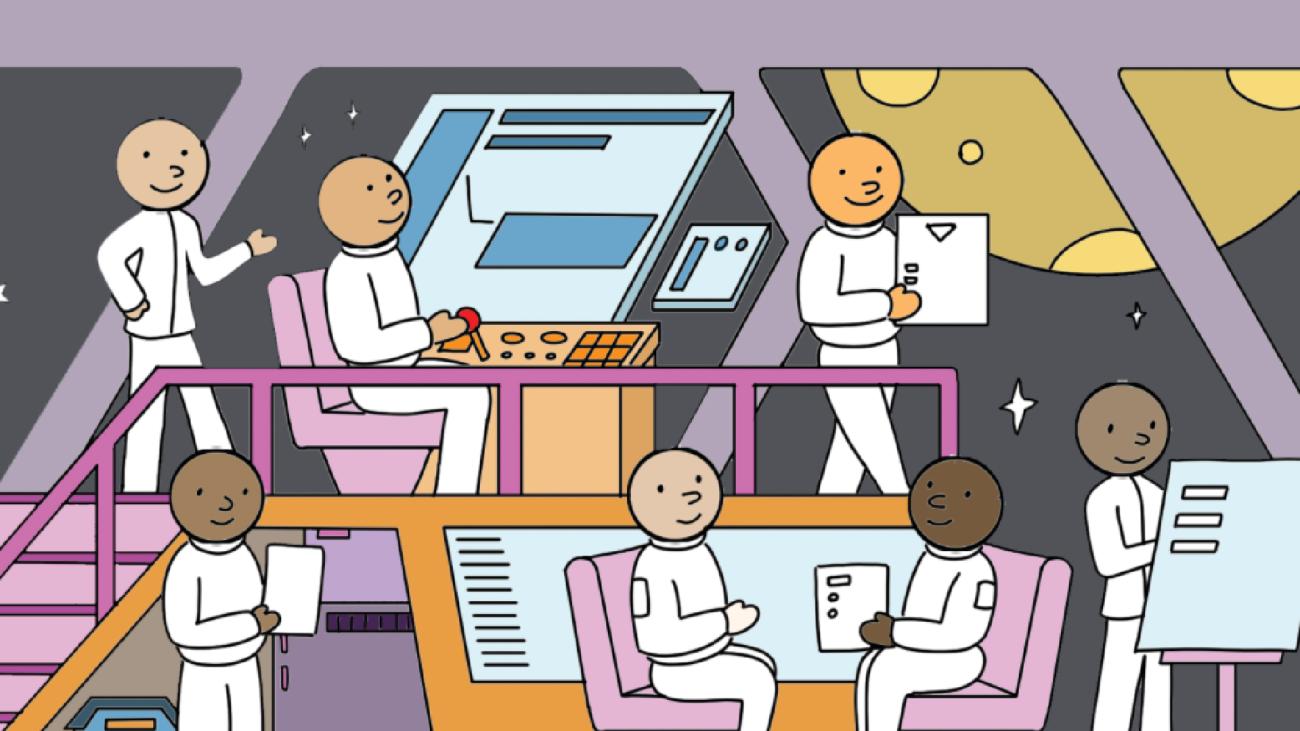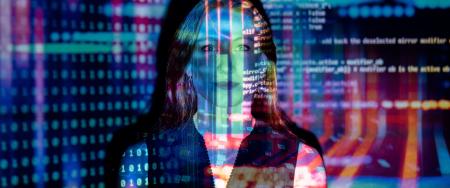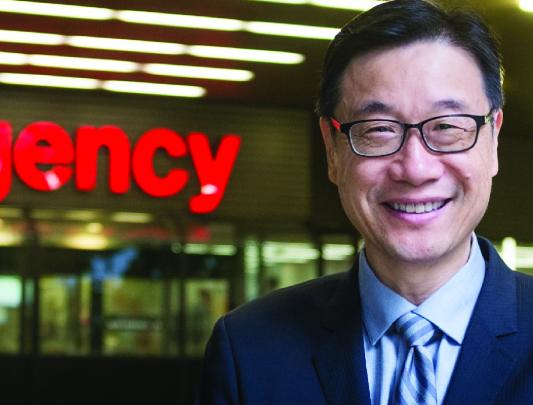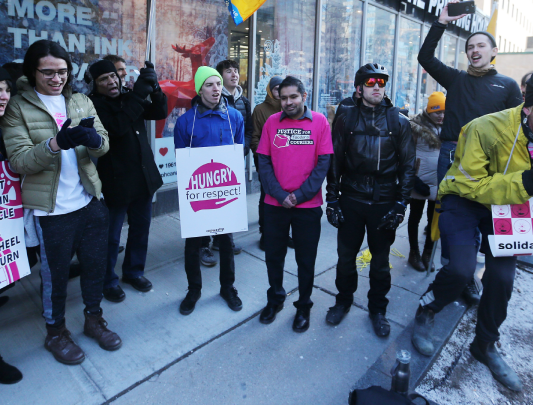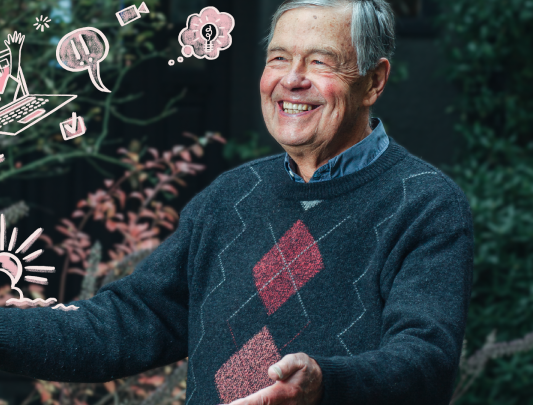Meeting location: Spaceship
A UBC prof adds some zip to our Zoom.
Sooner or later, the pandemic will end. But Zoom is here to stay. That Jetsons future of speaking with disembodied faces on a screen has finally arrived – and it’s kind of a drag.
“There seems to be a big gap when working at a distance,” observes UBC professor Patrick Parra Pennefather (speaking, as it happened, over Zoom). “What's missing is building team culture. We were so used to doing that in person.”
Thus, Pennefather’s new project, Virtual Co-Locator, aims to make our digital workspaces a little more bearable – and maybe even fun. The platform syncs with Zoom, Teams, and other platforms, extracts attendee faces from the normal rectangular grid, and superimposes them into vibrant new scenes. Attendees could interact with one another from the bridge of a spaceship, under a circus tent, or even within a Dali-inspired surrealist painting.
“It was more to encourage creative play – to encourage people to be able to have fun, take a break from this seriousness of a Zoom call,” says Pennefather, who teaches design and production in UBC’s Theatre and Film department.
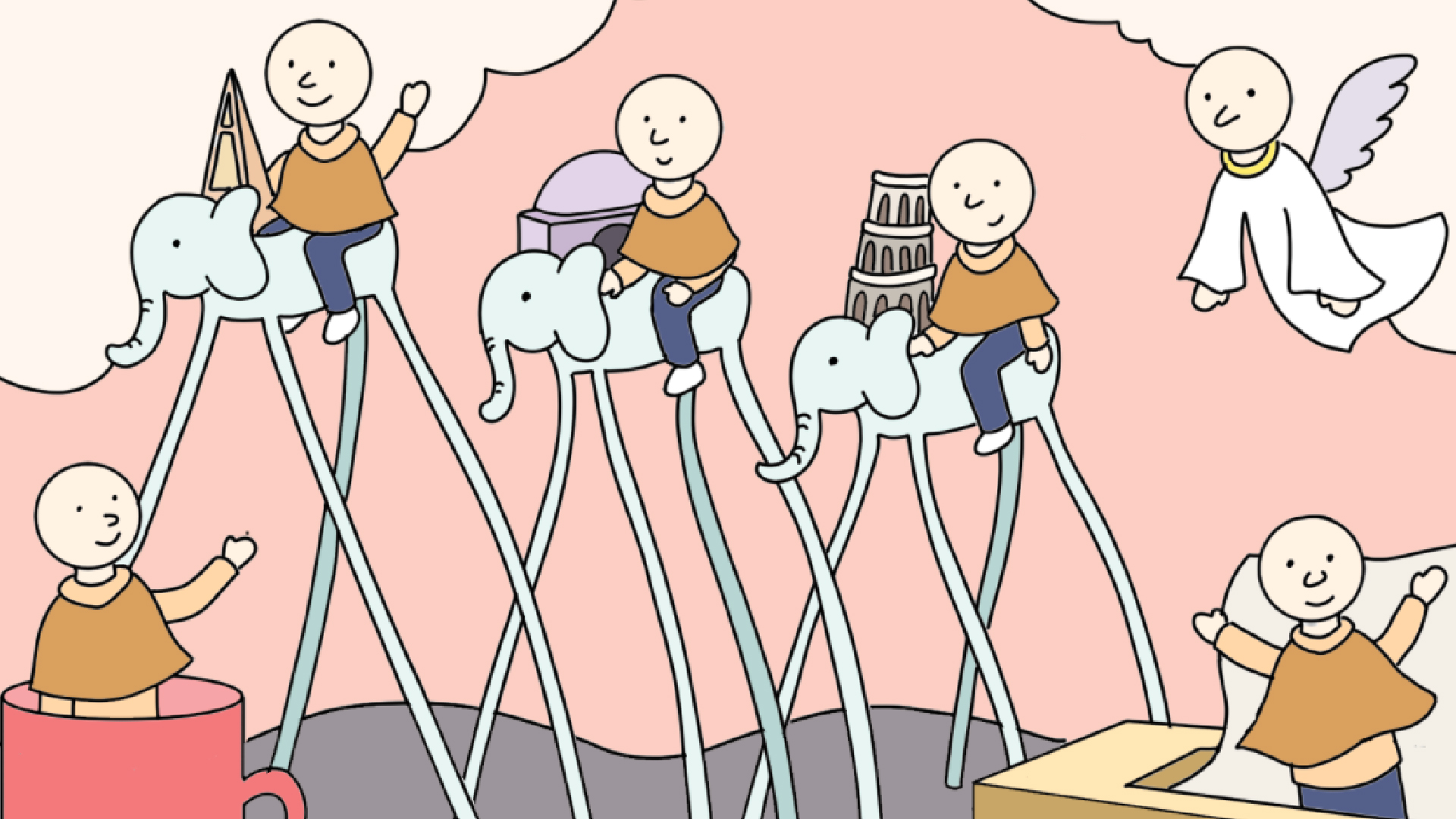
He and his student team, working with UBC’s Emerging Media Lab (where Pennefather is faculty in residence), originally designed Virtual Co-Locator for virtual improv comedy. He says the same principles apply to the modern workplace: dropping people into strange, new contexts helps them communicate and collaborate. Before the pandemic, those contexts were such humble spaces as a hallway, break room, or water cooler.
“Taking five minutes and walking around, hanging out with a colleague, those quick rapid conversations that can occur... not much needs to be said, but you do need to check in for two minutes – those instances are important.”
So far, Virtual Co-Locator can transport up to five attendees to its brave new digital worlds, which work within existing co-working platforms to handle the audio and video.
“We can find different uses of the technology to support our work, and we can still uncover the gaps.” To illustrate, Pennefather’s on-screen image suddenly morphs into a Pixar cartoon version of himself. “Eventually you and I will have a conversation and we’ll be able to flip back and forth between characters... like I did just now.”
He says as more industries become automated and more of us take our work to the digital realm, technology will be ready to connect us quickly, efficiently, and effectively. And, maybe, it will also be more fun.


